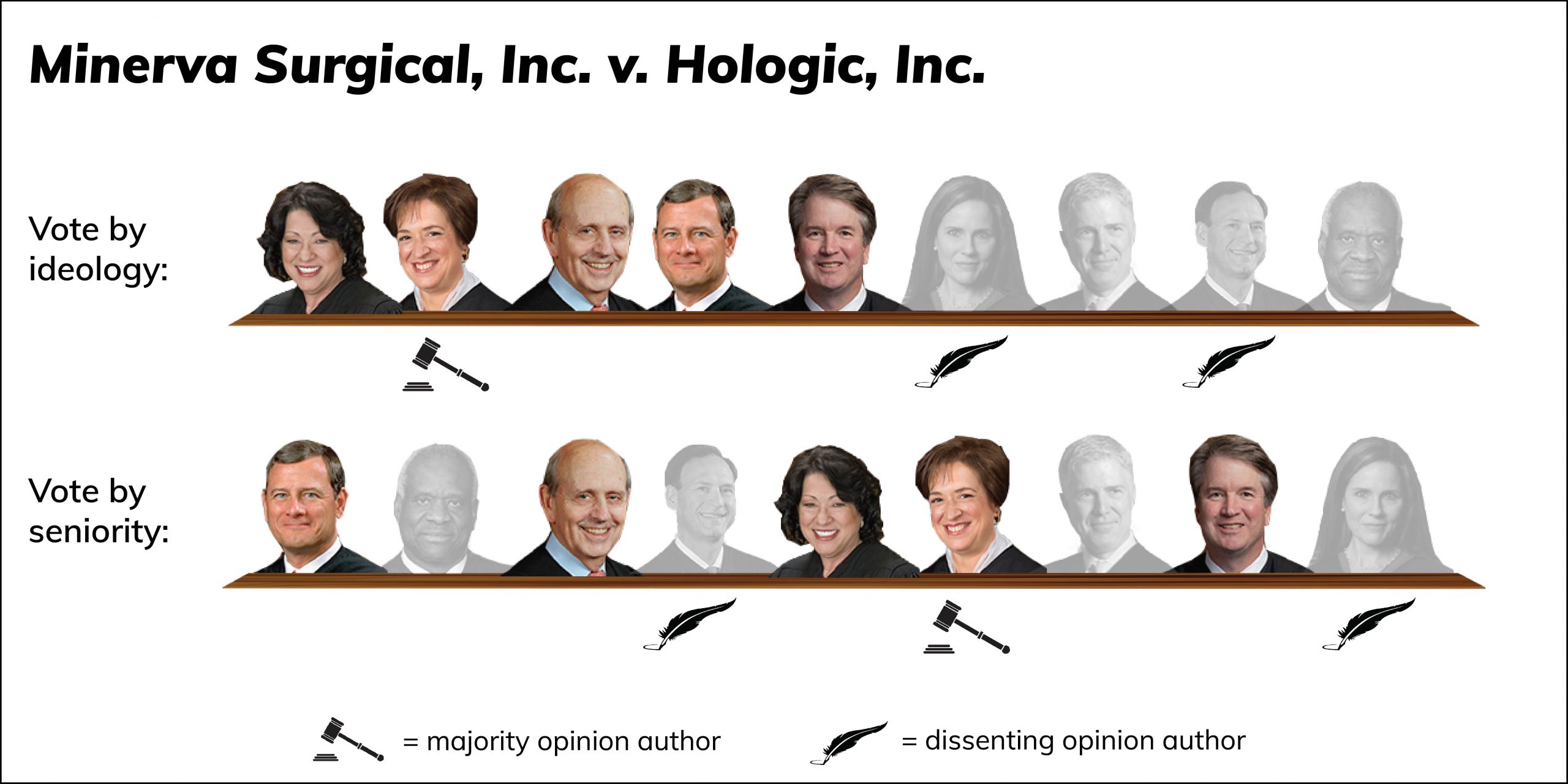Justices uphold but narrow patent assignor estoppel


The Supreme Court on Tuesday issued its opinion in Minerva Surgical Inc. v. Hologic Inc. The case sought to abolish the doctrine of patent assignor estoppel, which prohibits an inventor from challenging the validity of the patent on the inventor’s own invention. The court ruled 5-4 to uphold but narrow the doctrine. Justice Elena Kagan wrote the opinion for the court. Justice Samuel Alito filed a dissenting opinion. Justice Amy Coney Barrett also filed a dissenting opinion, in which Justices Clarence Thomas and Neil Gorsuch joined.
Federal courts have applied assignor estoppel in patent cases for more than a century, but the doctrine has faced significant criticism. In this case, Minerva, a medical-device maker, sought to overturn assignor estoppel after the doctrine blocked Minerva’s attempt to invalidate a patent that was assigned to Hologic. Minerva argued that assignor estoppel conflicts with the Patent Act, that the doctrine relies on precedent that has since been overturned, and that the underlying basis for the doctrine (that contesting patent validity contradicts the assignor’s implicit representations about validity) often is not true. Hologic urged the court to maintain the doctrine. It argued that the court should not abolish its longstanding precedent, particularly in light of the fundamental unfairness in allowing a patentee to try to undermine the value of the patent he or she sold. Hologic also argued that Congress implicitly incorporated the doctrine into the Patent Act.
The court declined to discard this form of estoppel. It is “well grounded in centuries-old fairness principles,” and the court continues “to see value in the doctrine,” Kagan wrote. But the court’s “endorsement of assignor estoppel comes with limits,” she added. The court announced that assignor estoppel applies only when “an inventor says one thing (explicitly or implicitly) in assigning a patent and the opposite in litigating against the patent’s owner.” Kagan identified three examples where the doctrine does not apply: (1) when an employee gives an employer a blanket assignment in “any future inventions,” (2) when the governing law on patent validity changes, or (3) when an inventor assigns a patent application (instead of an issued patent) and the issued patent is broader than the assigned application.
Because the U.S. Court of Appeals for the Federal Circuit “failed to recognize those boundaries,” the court sent the case back down to determine whether the third exception applies.
Alito’s dissent criticized the majority for “adopt[ing] a text-blind method of statutory interpretation.” Barrett’s dissent found no support for assignor estoppel in the Patent Act and rejected the notion that the doctrine carried over into the act through congressional ratification or background common-law principles.
Check back soon for in-depth analysis of the opinion.
Posted in Merits Cases
Cases: Minerva Surgical Inc. v. Hologic Inc.
